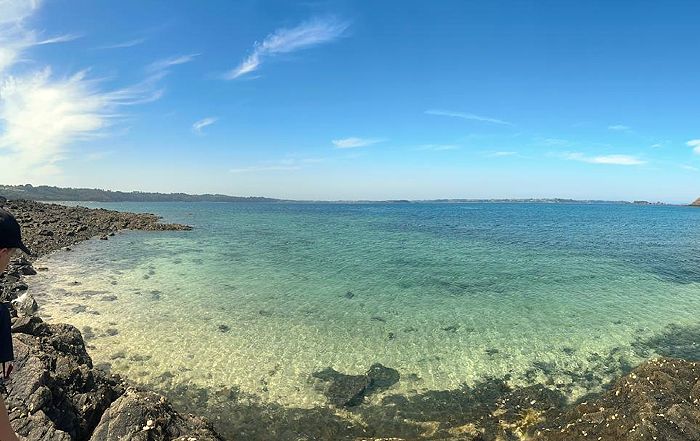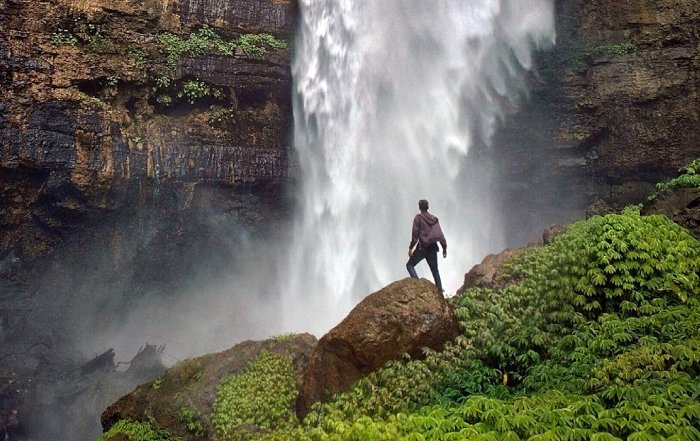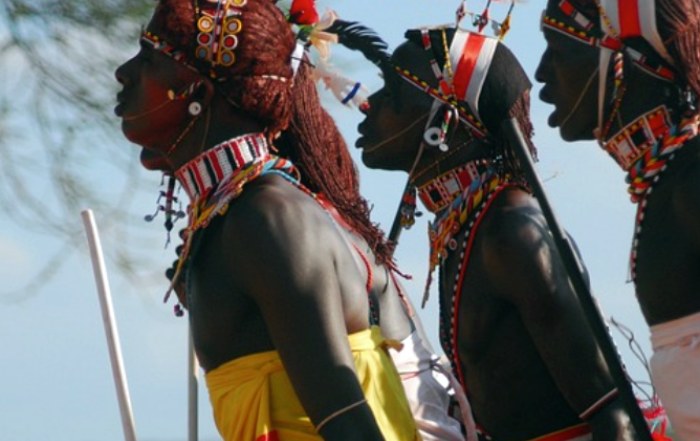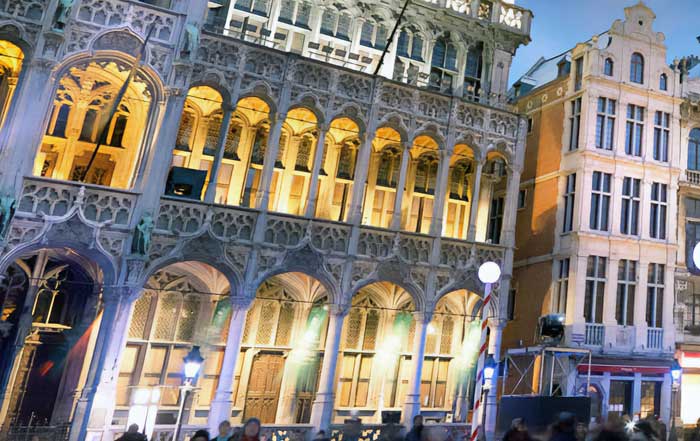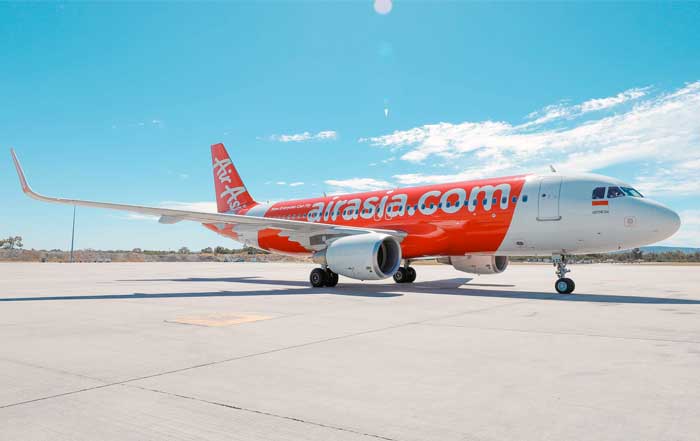Luxury travel often evokes images of high-end resorts, five-star dining, and exclusive experiences that seem unattainable without deep pockets. Yet, in 2025, the global travel industry is undergoing a transformation that makes luxury accessible to wider audiences. With the right strategies, travelers can enjoy indulgent experiences without straining their finances. The key lies in knowledge, timing, resourcefulness, and a willingness to explore alternative destinations and booking methods.
For readers of World We Travel, where the focus lies in global destinations, business travel, family trips, and emerging tourism trends, this article provides a detailed exploration of how to achieve luxury on a budget across continents. By blending expertise, real-world examples, and trusted resources, it offers a roadmap for turning aspirational travel dreams into affordable realities.
Redefining Luxury in 2025
Luxury no longer strictly means gold-plated service or private islands. Today, the concept embraces personalization, authenticity, and wellness. According to the World Travel & Tourism Council, travelers now associate luxury with experiences that create lasting memories rather than mere opulence. This includes immersive cultural tours, eco-conscious accommodations, and digital convenience powered by AI-based travel assistants.
Platforms like Skyscanner and Kayak have redefined how travelers perceive value by making flight and hotel comparisons more transparent. Similarly, boutique hotels, wellness retreats, and family-owned villas offer five-star quality without international chain markups.
Luxury has become democratized, with destinations in Southeast Asia, Eastern Europe, and South America offering affordable indulgence compared to established hotspots like Paris or New York.
Strategic Destination Choices
One of the most effective ways to access luxury on a budget is to carefully select destinations where the cost of living is significantly lower, yet the quality of service is world-class.
Southeast Asia: Countries such as Thailand, Vietnam, and Malaysia provide beachfront resorts and wellness spas at a fraction of Western prices. For example, travelers can book all-inclusive five-star accommodations in Da Nang or Phuket for what a mid-range hotel in New York might cost.
Eastern Europe: Nations like Hungary, Bulgaria, and Romania are emerging as cultural and wellness destinations. Budapest’s famed thermal spas rival Western Europe’s luxury offerings at a fraction of the cost.
South America: Brazil and Colombia are increasingly recognized for boutique hotels, eco-lodges, and culinary experiences that combine local authenticity with affordability.
For inspiration, World We Travel’s destinations page highlights emerging regions that cater to budget-conscious luxury seekers.
Luxury Travel Budget Calculator
Plan your dream luxury trip within budget
Your Luxury Budget Estimate
Timing and Seasonality
Timing is often the single greatest determinant of cost. Traveling during shoulder seasons—just before or after peak tourist influx—can cut expenses in half while still offering excellent weather. For instance, visiting the Greek Islands in late September instead of July provides warm seas, fewer crowds, and reduced hotel rates.
Airfare is another factor where flexibility pays. Tools such as Google Flights allow travelers to monitor price trends, set alerts, and take advantage of last-minute deals. Flying midweek, especially on Tuesdays and Wednesdays, is often cheaper than weekend departures.
Hotels and resorts also adjust pricing based on occupancy. Signing up for newsletters from Marriott Bonvoy or Hilton Honors often gives early access to seasonal sales or point bonuses.
Readers planning business trips can refer to World We Travel’s business travel section, which outlines strategies for merging corporate travel with affordable luxury stays.
Leveraging Loyalty and Reward Programs
Loyalty programs are no longer confined to frequent flyers. Credit cards linked to airlines or hotel chains can provide substantial value, offering free nights, cabin upgrades, and exclusive perks. Programs such as American Express Membership Rewards or Chase Ultimate Rewards allow users to transfer points to multiple travel partners, multiplying redemption options.
Hotel chains are competing aggressively for loyalty, and even mid-range travelers can take advantage of this competition. For example, IHG One Rewards frequently runs promotions where members earn double or triple points, making luxury stays at brands like InterContinental more affordable.
For families, pooling points across multiple accounts is possible with programs like British Airways Executive Club, ensuring that group travel remains cost-effective.
Budget-conscious readers can also explore World We Travel’s family section for tips on maximizing travel budgets while ensuring comfort.
Alternative Accommodation Options
Airbnb, Vrbo, and boutique villa rentals have revolutionized access to luxury. Instead of a standard hotel room, travelers can secure entire villas with private pools, chefs, and breathtaking views at prices that rival basic resort accommodations.
Luxury hostels—an emerging trend in Europe—blend affordability with upscale amenities such as rooftop terraces, coworking spaces, and curated cultural events.
For eco-conscious travelers, eco-lodges and glamping resorts offer luxury merged with sustainability. Countries like Costa Rica and Indonesia are leading this sector, where solar-powered resorts provide world-class service while reducing environmental impact.
Travelers seeking curated recommendations can explore World We Travel hotels guide, which showcases unique stays across continents.
Affordable Culinary Luxury
Fine dining is a hallmark of luxury travel, but it does not have to break the budget. Michelin-starred street food vendors in Singapore, family-owned trattorias in Italy, and food tours in Spain provide gourmet experiences at accessible prices.
Many top restaurants worldwide offer lunch menus at significantly lower prices than dinner service. Booking well in advance through platforms like OpenTable ensures access to coveted spots without inflated costs.
Wine tourism also presents affordable indulgence. Regions like Portugal’s Douro Valley or South Africa’s Stellenbosch offer vineyard tours, tastings, and fine dining for a fraction of what similar experiences would cost in France or California.
Wellness and Spa Experiences on a Budget
Wellness tourism has become one of the fastest-growing segments in global travel. Countries such as Thailand, Bali, and India offer spa treatments, meditation retreats, and yoga sessions that combine luxury with cultural depth at prices far lower than Western counterparts.
For example, a full-day luxury spa package in Bali can cost less than a single massage at a New York spa. Similarly, Germany’s Baden-Baden thermal baths provide a historical luxury experience at accessible entry fees.
Readers interested in the health benefits of luxury travel can refer to World We Travel health insights, which explores the intersection of wellness and tourism.
Smart Use of Technology
Technology has become the backbone of budget-luxury travel. Mobile applications such as TripIt, Hopper, and Rome2Rio provide intelligent recommendations, cost comparisons, and itinerary management.
Artificial intelligence is increasingly integrated into travel planning. From ChatGPT-powered booking assistants to dynamic pricing algorithms, travelers can now access insider knowledge once reserved for elite travel consultants.
World We Travel’s technology page highlights the latest digital tools that empower travelers to elevate their experiences without inflating costs.
Cultural and Local Immersion
True luxury often lies in unique cultural immersion rather than extravagance. Travelers can enjoy private tours, artisan workshops, and local culinary experiences that cost little but feel exclusive. In Vietnam, a private cooking class with a local chef can be arranged for under $50, while in Morocco, guided souk tours provide authentic luxury unmatched by standardized tourist packages.
Luxury is no longer about seclusion but about depth of experience. Choosing to stay in family-run riads in Marrakech or centuries-old estates in Tuscany offers richness of culture and history at reasonable rates.
For travelers seeking global inspiration, World We Travel’s global page provides curated cultural insights and destination highlights.
Sustainable Luxury Travel
Sustainability is increasingly aligned with luxury. Eco-friendly hotels, low-carbon transport, and organic gastronomy are not only responsible choices but also often cost-effective. Organizations like Green Key Global certify eco-luxury properties that combine affordability with environmental consciousness.
Rail travel in Europe, supported by initiatives like Eurail, offers scenic journeys with comfort, avoiding costly flights and reducing carbon impact. Similarly, destinations such as Norway and Sweden are pioneering sustainable luxury tourism with renewable-powered hotels and locally sourced cuisine.
Readers who want to align their choices with sustainability can explore World We Travel economy insights, which emphasize responsible tourism practices.
How to Get Luxury on a Budget Worldwide
Regional Guides to Affordable Luxury
Traveling with luxury in mind does not have to be restricted to ultra-wealthy travelers, especially when different regions around the world offer unique opportunities for indulgence at a fraction of the cost. By approaching each continent with a strategy tailored to its strengths, travelers can discover hidden gems that provide comfort, culture, and exclusivity without overspending.
Europe: Classic Elegance Without the Price Tag
Europe remains the most iconic destination for luxury travelers, but it is also often viewed as prohibitively expensive. However, careful planning and destination selection reveal a different reality.
Southern Europe
Italy, Spain, and Greece are home to some of the most luxurious travel experiences, yet each offers opportunities for budget-friendly indulgence. Staying in agriturismos in Tuscany provides not only vineyard views but also gourmet meals at costs far lower than standard hotels in Florence. In Spain, luxury comes alive through paradores, historic castles and monasteries converted into boutique accommodations that blend history with affordability. Greece, particularly islands like Crete or Rhodes, offers stunning resorts with full amenities at a fraction of the cost of Santorini or Mykonos.
Eastern and Central Europe
Eastern Europe is a rising star in affordable luxury. Budapest, with its grand spas and elegant hotels, offers a thermal bath and five-star suite experience for less than half the cost of similar offerings in Paris. Croatia’s Dalmatian Coast combines Mediterranean charm with far lower prices than Italy’s Amalfi Coast. Poland and the Czech Republic also provide Michelin-rated dining, historic castles, and luxury shopping with favorable exchange rates for foreign visitors.
For travelers seeking deeper cultural and luxury exploration, World We Travel’s Europe insights highlight cities and regions where exclusivity meets affordability.
Asia: Affordable Indulgence Meets Cultural Richness
Asia remains one of the most rewarding continents for budget-luxury travelers, offering five-star quality experiences at a fraction of Western prices.
Southeast Asia
Thailand, Vietnam, and Indonesia stand out as havens for luxury travelers who value both relaxation and authenticity. In Bali, private villas with pools, chefs, and spa services can be rented for the price of a mid-range hotel in Los Angeles. Vietnam’s coastal cities like Nha Trang and Da Nang provide luxury resorts along pristine beaches with impeccable service at highly affordable rates. Thailand’s Chiang Mai offers wellness retreats, yoga centers, and fine dining without the cost of Bangkok or Phuket.
East Asia
Japan and South Korea are traditionally associated with higher costs, but luxury can be found without overspending. In Kyoto, ryokans (traditional inns) offer luxury through cultural immersion, including private hot spring baths and kaiseki dining experiences, at prices lower than international hotel chains. South Korea’s spa culture, particularly the famed jjimjilbangs, provides wellness luxury accessible to locals and tourists alike.
Travelers interested in exploring how Asia integrates technology and tourism can review World We Travel’s technology section, which features how digital tools enhance travel across the region.
Africa: Luxury in Nature and Heritage
Africa provides a unique luxury proposition by merging wildlife, culture, and natural landscapes with affordability when compared to Western luxury benchmarks.
Safari Experiences
While Kenya and Tanzania are renowned for high-cost safaris, countries like Namibia, Botswana, and South Africa offer equally enriching wildlife experiences with more budget-friendly options. Boutique lodges near Kruger National Park provide five-star service at prices significantly lower than exclusive private reserves.
Coastal and Cultural Luxury
Morocco’s riads offer personalized luxury in Marrakech, combining history, architecture, and comfort for a fraction of Western boutique hotel prices. Egypt, with Nile cruises and luxury hotels overlooking the pyramids, blends affordability with grandeur. Coastal destinations like Zanzibar in Tanzania offer idyllic white-sand beaches and resorts comparable to the Maldives at a far more reasonable cost.
Africa is a destination where family and luxury travel often intersect, making World We Travel’s family travel page a valuable resource for planning.
The Americas: From Boutique to Bold Experiences
Luxury in the Americas varies greatly depending on region, but across South and North America there are opportunities for indulgence at value prices.
South America
Brazil’s coastal cities such as Florianópolis combine luxury beaches with affordable dining and nightlife. Argentina’s Mendoza region provides vineyard resorts with private tours and wine pairings for costs far below those in Napa Valley. Colombia’s Cartagena offers colonial-era luxury hotels and boutique accommodations with Caribbean flair at affordable prices.
North America
The United States and Canada are known for higher costs, but budget-friendly luxury exists. In the U.S., destinations like Charleston, Savannah, and New Orleans provide boutique southern charm with elegant accommodations priced lower than major metropolitan hubs. Canada’s Banff and Jasper regions allow access to luxury cabins and lodges with stunning alpine views at rates that remain competitive outside peak ski season.
Travelers can explore more insights into tourism economies across these regions via World We Travel economy trends, which highlight how pricing shifts affect accessibility.
Oceania: Remote Luxury Within Reach
Oceania often carries the perception of exclusivity due to long travel distances, yet it is possible to experience its luxury affordably.
Australia
While Sydney and Melbourne are expensive, smaller cities such as Adelaide or Hobart provide luxury boutique hotels and gourmet dining at much lower rates. Australia’s wine regions, including Barossa Valley and Margaret River, offer vineyard retreats that combine luxury with authenticity.
New Zealand
New Zealand is globally recognized for its natural beauty, and luxury here often means seclusion rather than extravagance. Luxury lodges on the South Island offer panoramic lake views, locally sourced cuisine, and outdoor adventure packages priced competitively for travelers seeking immersive experiences.
Readers planning long-haul trips to Oceania will benefit from World We Travel global travel tips, which provide strategies for maximizing value when traveling across continents.
Business Travel Hacks for Affordable Luxury
Luxury is not just for leisure travelers—business travelers increasingly combine affordability with comfort by leveraging loyalty programs, timing, and location strategies.
Companies are adopting bleisure travel policies, encouraging employees to extend business trips into leisure stays. This practice allows travelers to book luxury hotels at negotiated corporate rates while enjoying personal time at reduced personal expense.
Tools like Concur and SAP Travel Solutions help corporations manage travel budgets while maintaining high standards of comfort. Additionally, coworking hotels and executive apartments provide flexible accommodations for professionals who require both productivity and indulgence.
For insights on optimizing business travel budgets, World We Travel’s business guide explores the intersection of luxury and corporate travel.
Family Strategies for Affordable Luxury
Luxury travel often seems out of reach for families, yet with careful planning, it is possible to create unforgettable experiences without excessive spending.
Family Suites and Villas: Booking larger accommodations such as villas or family suites often proves more affordable per person compared to multiple hotel rooms.
All-Inclusive Resorts: In destinations like Mexico’s Riviera Maya or the Dominican Republic, all-inclusive packages provide families with access to gourmet dining, children’s clubs, and water sports at manageable rates.
Cultural Activities: Family-focused cultural experiences, such as farm stays in France or safari lodges in South Africa, combine education, adventure, and luxury at an inclusive price point.
Travelers can access curated family travel advice via World We Travel’s family travel section.
How to Get Luxury on a Budget Worldwide
Case Studies: Affordable Luxury in Action
Real-world examples best illustrate how luxury travel can be achieved on a budget. Across continents, travelers are finding ways to immerse themselves in exclusive experiences without spending excessively.
Case Study 1: Tuscany, Italy – Vineyard Luxury at Country Prices
While Florence and Rome are expensive, Tuscany’s countryside reveals a different story. Agriturismos—working farms that host guests—offer vineyard views, authentic Italian meals prepared with farm-fresh ingredients, and luxurious accommodations that feel as exclusive as five-star hotels. For under $150 a night, couples can enjoy panoramic landscapes, wine tastings, and personalized service. Compared to the average $600 nightly cost of city-center luxury hotels in Rome, this represents accessible indulgence.
Travelers can explore similar authentic destinations via World We Travel’s destinations guide, which highlights hidden gems across Europe.
Case Study 2: Bali, Indonesia – Private Villas Without the Premium Price
Bali is globally recognized as a hub for affordable luxury. A two-bedroom villa with a private pool, daily housekeeping, and optional private chef service often costs under $200 per night, particularly outside peak season. This is less than the cost of a single hotel room in Los Angeles. Beyond accommodations, full-day spa packages, yoga retreats, and fine dining in Ubud or Seminyak cost a fraction of similar services in Western countries.
The Indonesian island also highlights the intersection of wellness and luxury, a topic explored in depth on World We Travel health travel.
Case Study 3: Cartagena, Colombia – Colonial Charm at Affordable Rates
Cartagena’s Old Town provides historic luxury experiences for far less than European equivalents. Visitors can stay in centuries-old mansions converted into boutique hotels with rooftop pools, private courtyards, and personalized service for around $120 per night. Fine dining, rooftop cocktails, and guided historical tours combine exclusivity with value, making Cartagena a South American leader in affordable luxury.
Case Study 4: Budapest, Hungary – Spa Culture Meets Five-Star Comfort
Budapest is a prime example of affordable European luxury. The city is home to grand thermal bathhouses, such as Széchenyi and Gellért, where entry costs less than $20. Pairing this with boutique hotels in the city center, offering spa facilities and fine dining at under $200 a night, provides travelers with a luxury spa holiday for a fraction of the cost of Paris or London.
Travelers seeking inspiration for similar global wellness experiences can explore World We Travel hotels and accommodations.
Case Study 5: Cape Winelands, South Africa – Wine and Scenery on a Budget
The Stellenbosch and Franschhoek regions of South Africa rival France’s Bordeaux or California’s Napa Valley in quality yet remain far more affordable. Luxury vineyard stays, complete with wine pairings, fine dining, and guided tours, can be enjoyed for under $150 a night. The South African rand provides favorable exchange rates, further increasing affordability for international travelers.
Practical Tips for Securing Luxury on a Budget
While case studies provide inspiration, every traveler benefits from practical strategies that transform dreams into reality.
Tip 1: Combine Price Alerts with Flexibility
Using platforms like Google Flights and Hopper allows travelers to monitor price fluctuations and book flights when they are at their lowest. Flexibility with travel dates and destinations can reduce costs significantly.
Tip 2: Book Direct for Added Perks
While comparison platforms are excellent for initial research, booking directly with hotels often results in perks such as complimentary breakfast, late check-out, or room upgrades. Luxury hotels in Asia and Europe frequently reward direct bookings with exclusive extras.
Tip 3: Leverage Loyalty and Credit Card Partnerships
Credit card reward programs such as Chase Sapphire Preferred or American Express Platinum are designed for travelers who want luxury experiences. By accumulating points and transferring them to hotel or airline partners, travelers can access five-star accommodations or business-class flights for minimal cash outlay.
For example, redeeming 60,000 points through Hyatt Hotels can cover multiple nights in high-end properties in Southeast Asia, while the same points might only cover one night in New York.
Tip 4: Embrace Shoulder Seasons
Luxury experiences become far more affordable when booked outside peak periods. Europe in spring or fall, Southeast Asia in May or September, and the Caribbean in late summer provide world-class weather and services at significantly reduced costs.
Readers interested in market dynamics that affect seasonal travel costs can review World We Travel economy section.
Tip 5: Choose Boutique Over Chain Hotels
Boutique hotels, family-run estates, and local luxury accommodations often provide superior personalized service compared to international chains. They also tend to be more affordable, as they avoid the branding premiums associated with major names.
Tip 6: Use Regional Transport Instead of Flights
Rail travel in Europe, domestic buses in South America, and regional ferries in Asia all offer luxury experiences at reduced prices. For example, a first-class Eurail pass allows travelers to experience panoramic routes in Switzerland or Italy at far lower costs than flying.
World We Travel global travel section covers additional transport strategies for budget-conscious luxury travelers.
The Psychology of Affordable Luxury
Luxury is as much about perception as it is about tangible services. The rise of experience-driven travel means that exclusivity is increasingly defined by personal value rather than price. Travelers now consider cultural immersion, wellness experiences, and authentic encounters as luxurious—even when they are budget-friendly.
Social media also influences this perception. A boutique stay in Morocco, a vineyard retreat in Portugal, or a wellness escape in Bali provides the same social cachet as a week at a major international resort, but with far lower costs.
The Future of Affordable Luxury Travel
The future of luxury travel lies in accessibility. Technology, sustainability, and globalization are reshaping how exclusivity is defined. AI-driven platforms will continue to democratize insider travel knowledge, while eco-luxury initiatives will allow travelers to indulge responsibly. As currencies fluctuate and emerging economies develop their tourism sectors, destinations once considered exclusive will become affordable alternatives.
Organizations such as the World Tourism Organization (UNWTO) emphasize that inclusivity is key to long-term travel industry growth. Luxury travel that is both sustainable and affordable will define the next decade.
Conclusion
Luxury on a budget is no longer a contradiction—it is a reality that millions of travelers are embracing in 2025. From vineyard stays in Italy to villa retreats in Bali, spa culture in Hungary, and safari lodges in South Africa, indulgence has become more accessible than ever.
The strategies outlined—timing, loyalty programs, boutique accommodations, and cultural immersion—demonstrate that luxury is less about price and more about choice. For readers of World We Travel, this means that planning with intention unlocks opportunities to experience the world’s most exclusive offerings without overspending.
Affordable luxury empowers travelers to expand their horizons, enrich their well-being, and connect with cultures deeply, proving that true indulgence lies not in how much you spend, but in the richness of the experiences you embrace.


